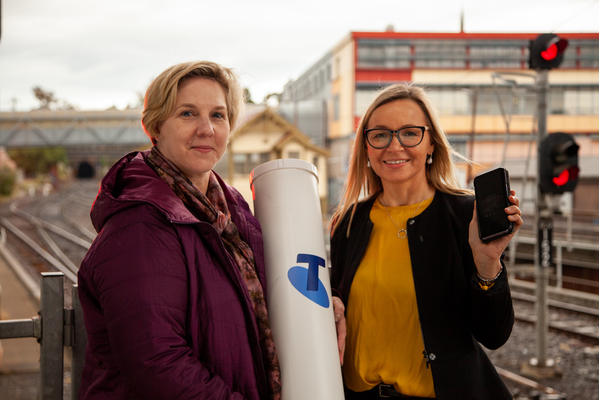
By Luke Voogt
A one-minute mobile black hole at the Geelong Railway Station tunnel will cease to frustate commuters by July, Telstra has announced.
Public Transport Users Association Geelong convener Paul Westcott welcomed plans to remove the “black hole” as part of an $18 million State Government investment.
“(Currently) you lose your mobile for less than a minute which in the scheme of things is minimal,” he said.
“But it is – in principle – the right thing to do if you’re going to have good coverage from one end of the line to the other.”
Mr Westcott described the improvement as minor compared to plans to fix a mobile phone dead zone stretching roughly 20 minutes from Lara to Tarneit.
Telstra is constructing two towers, at Little River and Tarneit, and is supporting the construction of another south of Little River.
The tunnel project and towers are part of an $18 million Victorian Government project to deliver mobile coverage to the state’s five busiest regional lines.
Telstra chief operations officer Robyn Denholm announced the plans for the tunnel at Geelong Railway Station on Monday.
“It’s something our customers have been asking for,” she said.
“Rail patronage is up and people want to use their devices in a reliable way on the train.
“On the Geelong line alone 7.62 million passenger trips were made last financial year.”
The company would begin construction in June and expected to complete the project by the end of the month, Ms Denholm said.
Workers would install two state-of-the-art, highly-directional antennas at both ends of the tunnel and about 400m of cabling, she said.
The work would take place outside of train-operating hours, she added.
The additional mobile coverage would help passengers “balance work and life” by allowing them to email or video conference while commuting, Ms Denholm said.
“Or even relax and listen to music or watch their favourite TV show.”
Victoria was the first Australian state to invest in on-train technology to repeat the signal from nearby mobile towers for passengers to access the network, Ms Denholm said.
Telstra, along with Optus and Vodafone, agreed to pay for the construction of the mobile towers at Little River and Tarneit while the Victorian Government will fund the repeaters.
A Telstra spokesperson declined to detail the funding arrangements for each project, stating they were commercial in confidence.






